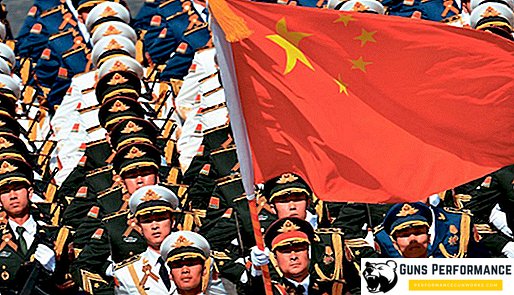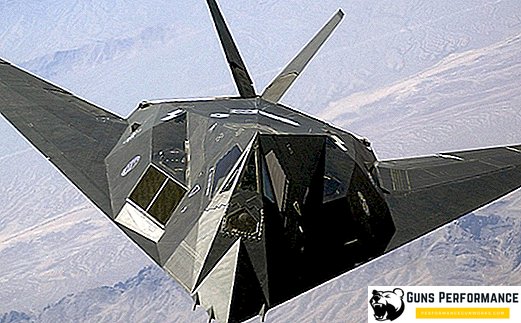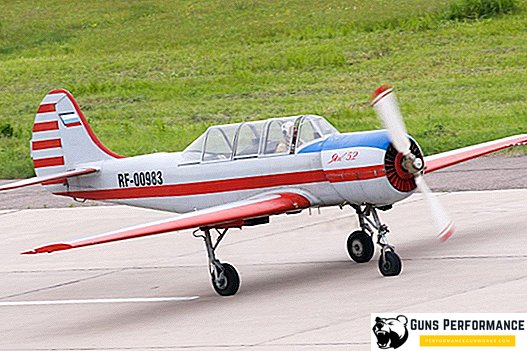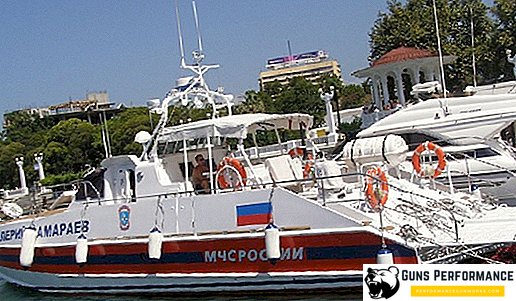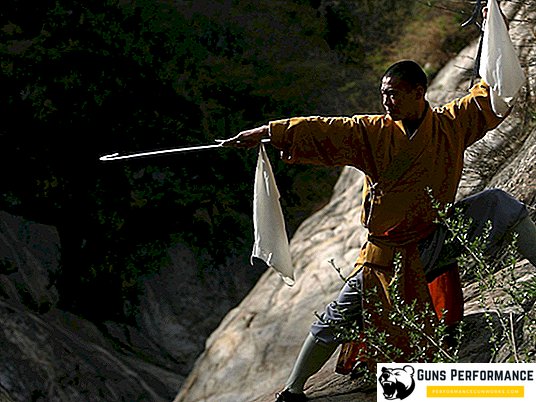
Su-27 is a Soviet (Russian) multi-purpose fighter of the fourth generation, created in the Sukhoi Design Bureau in the 70s of the last century. The main objective of this machine - the conquest of air superiority.
The prototype of the Su-27 first took to the air in 1977, and in 1984, the serial fighter jets began to enter the army. Officially, the operation of the Su-27 began in 1985, and it continues to this day. Moreover, on the basis of this remarkable machine, a whole line of modifications has been developed. There are more than ten varieties of this fighter.
Today, the Su-27 is one of the main fighters of the Russian Air Force, in addition, this machine is in service with the air forces of the CIS countries, India, China, Vietnam, Angola and other countries.
The Su-27 fighter is one of the most successful machines created by the designers of the Sukhoi Design Bureau and one of the best fourth-generation fighters in the world. And you can also say that this is just a very beautiful aircraft, fascinating with its grace and special grace. Aircraft designers say that only beautiful aircraft fly well, and the Su-27 fighter is a clear confirmation of this rule.
It should also be noted that this machine has excellent flight performance: on the account of the Su-27 several world records.

History of the winged cars
In the early 60s, a new generation of fighters appeared, having in their layout a number of similar features, which determined the very similar characteristics of these machines. They had a maximum speed of about twice the sound, the ceiling - 18-20 km, equipped with fairly advanced airborne radar and powerful rocket armament.
At that time, it was believed that combat jets would increasingly resemble high-speed, reusable rockets, air clashes would take place at medium and long distances, and air landfills of the past war would finally sink into oblivion. These fighters had a wing with a thin profile and a high specific load, which gave tangible advantages in supersonic, but significantly reduced maneuverability and increased take-off and landing speed. The main focus was on the use of rocket weapons.
The Americans very quickly understood the fallacy of this tendency, their experience in using aviation in the Vietnam War showed that it was too early to write off the close maneuver fight. The Phantoms had a definite advantage at medium and long distances, but guaranteed to lose to the more maneuverable MiG-21 fighters in close combat.
Around the mid-60s in the West, the race began to create a fourth-generation fighter. The leaders in it were the Americans. The new fighter was supposed to replace the reliable, but outdated "Phantoms". In 1966, it was decided to deploy the FX program (Fighter Experimental) in the USA.
The first drawings of the car appeared in 1969, in the future it received the name F-15 "Eagle". In 1974, the first mass-produced F-15A and F-15B aircraft began to arrive in the army.
Over the course of American developments closely followed in the Soviet Union. Information received through different channels was carefully analyzed. Work on the fourth-generation Soviet fighter began in 1969 - but it was carried out on its own initiative. Only in 1971, the corresponding order to begin a state program for the development of a new fighter followed, which was to be the Soviet response to the American F-15.
A competition was announced, in which the leading aviation design bureaus of the Soviet Union took part. It is curious that the general designer Sukhoi did not initially plan to engage in a new machine, because his design bureau was overloaded with work: the first pre-production samples of the Su-24 were being tested, the development of the T-4 rocket carrier, the Su-25 attack aircraft were being developed, and -17 and Su-15.
In addition, Pavel Osipovich believed that the current level of development of domestic electronics does not allow the creation of a fighter with the required characteristics. It should be noted that the designers of the Sukhoi Design Bureau were the first to, as an initiative, begin to work on the appearance of a new fighter.
The first version of the aircraft was created in the Sukhoi design bureau back in 1970. It was a fighter with an integral layout, a moderately swept wing and pronounced root troughs. The aircraft was originally designed as a statically unstable, its stability in flight should have been provided by the EDSU.
In 1971, the military formulated the requirements for a new fighter. They did not become original: they just took the main characteristics of the F-15 and added 10% to them. The machine had to have high maneuverability, speed, have powerful weapons and a long range, have a perfect complex of avionics.

In 1972, two technical councils were held, at which the Yakovlev, Sukhoi and Mikoyan design bureaus presented their developments on the new machine. According to their results, the Yakovlev Design Bureau dropped out of the competition. At the same time, the Mikoyan people suggested developing not one, but two fighters at once: light and heavy - but at the same time maximally unify their equipment. This was supposed to speed up production and reduce the cost of serial machines.
At the same time, a similar concept was adopted in the USA: the F-16 was the light fighter and the F-15 was the heavy one. Therefore, in the USSR decided to do the same.
The sketch design of the fighter was completed in 1975, the prototype of the machine was designated the T-10, its first flight took place in May 1977.
Until 1979, several pre-production aircraft were built. Flight tests and equipment testing showed that the T-10 flight performance was significantly inferior to the performance characteristics of its potential enemy - the American F-15 fighter. In addition, there were many problems with the radio-electronic equipment of the new aircraft, its radar did not work normally. T-10 did not meet the technical requirements. The creators of the aircraft faced a difficult dilemma: either try to “bring” the existing plane and start its mass production, or completely redo the car. In this case, the solution had to be found as soon as possible. Designers stopped on the second version.
In the shortest possible time, a practically new aircraft was created, it received the designation T-10C, and in April 1981 it rose to the sky. This machine had a trapezoidal wing with rounded root bursts and other engine arrangements. The arrangement of the nose landing gear and brake flaps was also changed, and other modifications were made.
Serial production of the new aircraft began in 1981 at the aircraft plant in Komsomolsk-on-Amur, although state testing of the machine was officially completed only in 1985. Officially, this aircraft was adopted in 1990, after the finalization and elimination of all defects detected during operation.

Su-27 device
Su-27 is made according to the integrated aerodynamic scheme - its wing is smoothly connected with the fuselage, forming a single whole. On airplanes with a similar layout, the fuselage is absent as such: the lifting force is created not only by the wings, but also by the body of the vehicle.
The wing of the aircraft is equipped with root sweeps with a large sweep, this significantly improves the aerodynamic characteristics of the fighter at high angles of attack, along the leading edge of the sweep of the wing - 42 °. The wing of the Su-27 is equipped with flaperons and two-piece wing socks.
Horizontally, the aircraft empennage is full turning, vertical - two-fin.
The fuselage of the Su-27 can be divided into three parts: front, middle and tail.
In front of the aircraft is the on-board radar, the cockpit, the nose landing gear and some electronic equipment systems. The fully enclosed cockpit contains the K-36 DM chair-catapult, in the two-seater fighter versions of the pilot's seat are arranged in tandem.
The middle part of the fuselage contains the wing center section, fuel tanks, armament compartment and brake flap. Here are the main chassis rack. In the tail end of the fighter there are two engines, an equipment compartment, a central beam with a fuel tank and brake parachutes.

Aircraft landing gear tricycle, with the front desk. All three racks have one wheel each. The front landing gear retracts into the fuselage, and the main - in the center section of the wing.
The power plant of the fighter consists of two double-circuit TRDDF AL-31F with afterburner.
The fighter’s fuel system consists of five tanks that hold 9,400 kg of fuel. Due to the impressive volume of fuel, the Su-27 has a significant combat radius, the maximum range is 3900 km.
The Su-27 flight-navigation complex includes: the inertial course of the IKV-72, Doppler velocity meter, radio compass, Radikal navigation system, aircraft responder SO-72, Maneuver calculator, as well as automatic control system, flight instruments and radio altimeter.
The aircraft’s on-board defense complex consists of an irradiation warning station and an interference emission system.
The aircraft is equipped with the RLPK-27 “Sword” complex, the SEI-31 single indication system, the air object recognition system and the weapon control system. Fighter targets can be found in the forward hemisphere up to 100 km, in the rear - up to 40 km. Su-27 can simultaneously lead to ten targets and attack one of them. The RPLK-27 complements the OEPS-27 optical-electronic sighting system, which consists of a laser range finder and a heat finder.
Su-27 is armed with an automatic gun GSH-301 caliber 30 mm (ammunition 150 shells), as well as various rocket weapons. The gun is installed in the right wing flow. The aircraft has ten suspension assemblies. Rocket armament aircraft includes missiles of various classes. The maximum combat load of the aircraft - 6 thousand kg.

Su-27 application
Su-27s began to arrive at the line units in 1984, in the West they started talking about this plane in 1987 after an incident that almost ended in tragedy. Su-27 USSR Air Force collided with the Norwegian Orion patrol aircraft over the Barents Sea. Both aircraft received minor damage and were able to return to base.
Before the collapse of the Soviet Union, most of the Su-27 was in service with the air defense forces. For a long time, this car was considered one of the most maneuverable in the world, the fighter was regularly shown at various air shows and shows. Figures of aerobatics (for example, the world famous "Pugachev Cobra"), which can be performed by the Su-27, invariably lead the audience to delight and amazement.
After the collapse of the USSR, the Su-27 became one of the main fighters of the Russian Air Force. Today, as part of the Air Force of the Russian Federation about 400 such machines. On the basis of the Su-27 created many modifications, the latter of which is much more perfect than the base model. The Su-27SM fighter belongs to the 4 ++ generation.
Unlike its American counterpart, the F-15, the Su-27 fighter has practically not been used in actual combat.
One Su-27 Russian Air Force was hit by an anti-aircraft missile during the Georgian-Abkhaz conflict in 1993.
The Ethiopian Su-27 air force was used during the Ethiopian-Eritrean conflict, where they charged three enemy MiG-29s to their own account.
Russian Su-27s participated in the 2008 Russian-Georgian conflict.

The Su-27 fighter failed to come together in a real air battle with its main rival - the F-15. However, between the aircraft repeatedly conducted training fights. In close combat, the Su-27 has a significant advantage: the Russian machine is more manoeuvrable and is distinguished by high thrust-to-weight ratio. But avionics from the “American” is better, so at long distances the chances of an F-15 look preferable.
During the Cope India 2004 exercise, the American F-15 and Su-27 Indian Air Force participated in training matches. The Americans lost more than two thirds of the fights. Indian pilots tried to approach the enemy as close as possible to the distance of the cannon volley.
Specifications
| Length m | 21,935 |
| Height, m | 5,932 |
| Weight, kg | |
| empty aircraft | 16300 |
| normal takeoff | 22500 |
| maximum takeoff | 30000 |
| maximum | 9400 |
| Engine | 2 TRD AL-31F |
| Maximum thrust, kN | |
| formless | 2 x 74.53 |
| afterburner | 2 x 122.58 |
| Max. speed, km / h: | 2500 |
| Practical ceiling, m | 18500 |
| Practical range, km | 3680 |
| Armament: | 30-mm gun GSH-301; combat load - 6 thousand kg, 10 knots of suspension. |



